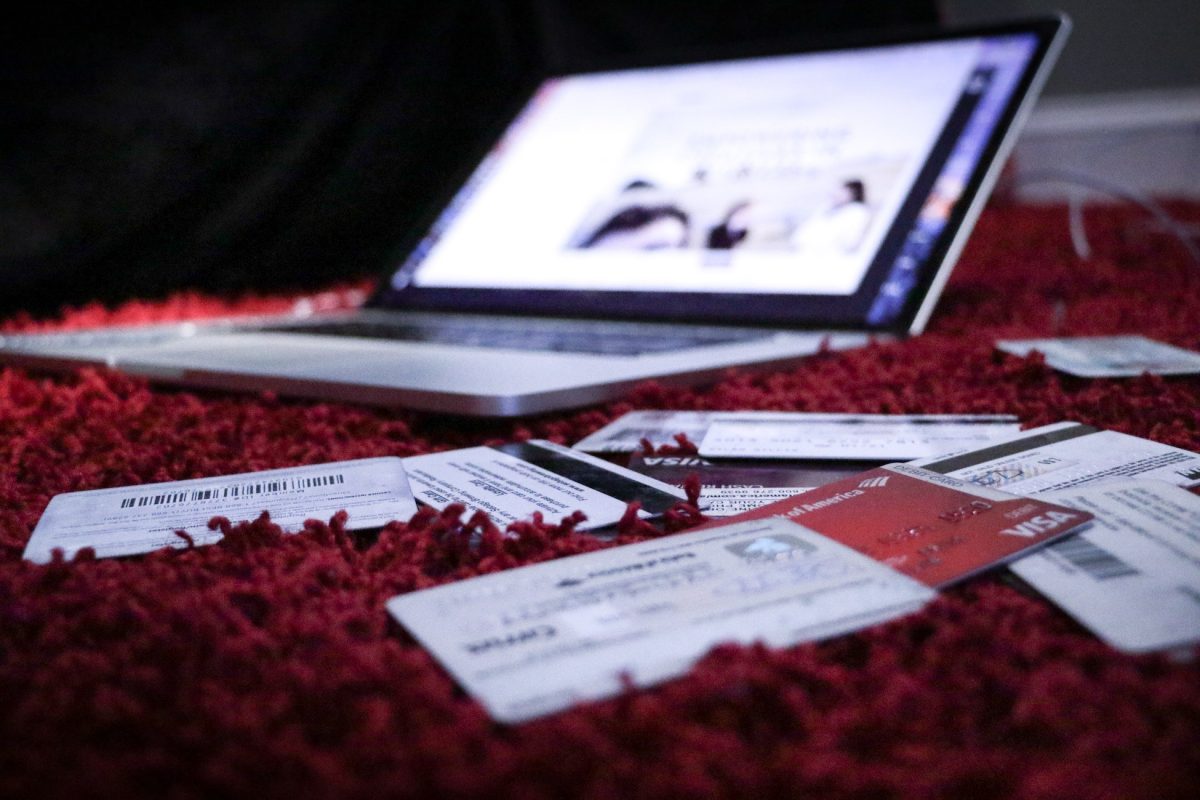Picture this: you’re cruising down the information superhighway on your smartphone, juggling student loans like a boss while scrolling through memes and streaming your favorite shows. But then, out of nowhere, you catch wind of a Direct Stafford Loan—an unsung hero in the world of federal student aid. Buckle up, because we’re about to embark on a 3000+ word adventure that demystifies this financial tool, injects a healthy dose of humor, and helps you unlock a savvy approach to managing your college funds. Whether you’re a Millennial still recovering from ramen noodle days or a Gen Z hustler with big dreams and a bigger backlog of student loans, this guide is your passport to financial empowerment.
What Is a Direct Stafford Loan Table of Contents
What Is a Direct Stafford Loan?
Types of Direct Stafford Loans: Subsidized vs. Unsubsidized
Eligibility Requirements: Who Qualifies for a Direct Stafford Loan?
How to Apply: The Direct Stafford Loan Application Process
Comparing Direct Stafford Loans to Other Financial Aid Options
Understanding the Repayment Process and Borrower Protections
Tips to Manage Your Student Loans and Financial Wellbeing
Direct Stafford Loans: Myths vs. Reality
Resources and Community Support: Your Next Steps
Building Your Master Plan for Financial Success
What the Future Holds: Financial Empowerment for Millennials and Gen Z
FAQs on Direct Stafford Loans: Your Burning Questions Answered
Your Journey to Financial Empowerment with Direct Stafford Loans
What Is a Direct Stafford Loan?
So, what exactly is a Direct Stafford Loan? In a nutshell, it’s a type of federal student loan offered by the U.S. Department of Education to help cover the costs of college. Think of it as your friendly neighborhood financial sidekick that comes with perks—like fixed interest rates, borrower protections, and a clear, straightforward process for funding your education. Unlike some private loans that require you to be a human calculator, Direct Stafford Loans are designed to provide consistent, predictable rates so you can focus on the exam cramming and student life shenanigans.
There are two flavors of Direct Stafford Loans available: Subsidized and Unsubsidized. Each comes with its own unique charm and set of requirements. Subsidized loans are often the belle of the ball since the government covers the interest while you’re in school, while unsubsidized loans work for any student regardless of financial need, though they start accumulating interest the moment they’re disbursed.
Word on the street is that understanding your loan options is like choosing the perfect avocado at the grocery store—once you know what to look for, everything just clicks. We’re here to break it down so you can say “bye-bye” to confusion and “hello” to financial clarity.
Types of Direct Stafford Loans: Subsidized vs. Unsubsidized
Let’s start with the basics and get up close and personal with the two main types of Direct Stafford Loans. Spoiler alert: one comes with a government-funded interest perk and one doesn’t.
Direct Subsidized Loans
Direct Subsidized Loans are the golden child of federal student loans. They’re available to undergraduate students who demonstrate financial need. What makes these loans especially attractive is that the government picks up the tab on the interest while you’re enrolled at least half-time, during the grace period, and for certain qualified deferment periods. This means you don’t have to worry about your loan growing like a snowball rolling downhill in a winter storm.
In other words, while you’re busy acing your classes and perfecting your TikTok dance moves, the government has got your back by preventing interest from accruing—making it easier to manage your loan repayment down the road.
Direct Unsubsidized Loans
Direct Unsubsidized Loans, on the other hand, are available to both undergraduate and graduate students, regardless of financial need. The catch? Interest starts accruing right from the get-go. But don’t let that scare you off—these loans still offer competitive fixed interest rates and flexible repayment options.
While you might end up paying a bit more in interest over time, Direct Unsubsidized Loans provide an additional funding lifeline for those whose educational expenses exceed the limit of subsidized loans. They’re like that extra shot of espresso: not for everyone, but definitely not to be overlooked if you need that extra boost.
Ultimately, whether you qualify for the subsidized version or need to tap into the unsubsidized option, understanding the differences is key to deciding which loan best fits your academic journey and future financial plans.
Eligibility Requirements: Who Qualifies for a Direct Stafford Loan?
Now that we’ve navigated the types of Direct Stafford Loans, let’s dive into who’s eligible for this federal lifeline. The eligibility criteria might seem daunting at first glance, but just like deciphering a bizarre text from your crush, it becomes easier with a little guidance.
First up: citizenship and residency. Generally, you need to be a U.S. citizen or an eligible non-citizen to get your hands on a Direct Stafford Loan. This is a federal program, after all, meaning it’s designed to benefit those who are part of the U.S. education system.
Next, you must demonstrate enrollment in an eligible degree or certificate program at a participating school. This means your chosen institution must be approved by the U.S. Department of Education. If you’re dreaming of studying at a cutting-edge tech institute or that quirky arts college downtown, just make sure it’s on the approved list.
Then, there’s the matter of financial need. While Direct Subsidized Loans require you to show that need, Direct Unsubsidized Loans are available regardless. However, regardless of the type, you’ll need to fill out the Free Application for Federal Student Aid (FAFSA). Yes, the infamous FAFSA—the form that triggers many a sigh, but ultimately holds the key to unlocking your financial support.
Other eligibility tidbits include maintaining satisfactory academic progress as defined by your school and not being in default on any previous federal student loans. It might feel like a laundry list of rules, but think of it as the guidelines for a VIP club where only responsible students are allowed.
In essence, if you’re enrolled in an eligible program, glued to your studies (and occasionally your phone), and meeting the necessary academic and financial standards, you’re in the clear to access this federal student aid.
How to Apply: The Direct Stafford Loan Application Process
Alright, aspiring scholars, it’s time to talk turkey—and by turkey, we mean the nuts and bolts of applying for your Direct Stafford Loan. The process is straightforward, but as with assembling IKEA furniture, a little preparation goes a long way.
Step 1: Fill Out the FAFSA
Your journey starts with the FAFSA. This form is your gateway to federal financial aid, including Direct Stafford Loans. The FAFSA collects your financial details, meant to paint a picture of your economic status for the federal aid office. Complete it online at studentaid.gov, and be sure to have your financial documents on hand. Tip: Fill out the FAFSA as early as possible—think of it as snagging the best seat at a concert!
Step 2: Review Your Student Aid Report (SAR)
After you submit your FAFSA, you’ll receive a Student Aid Report (SAR). This report summarizes your financial information and gives you an idea of your Expected Family Contribution (EFC). Take a moment to review it for accuracy. If you spot any errors, contact the relevant offices to have them corrected—because, honestly, who wants a mix-up in their financial future?
Step 3: Get Your Financial Aid Offer
Once your FAFSA is processed and your SAR is set, your college’s financial aid office will send you an award letter. This wheelhouse document lists the types and amounts of financial aid you’re eligible for, including Direct Stafford Loans. Compare offers if you’re juggling multiple acceptance letters—this is where your inner financial Sherlock comes into play.
Step 4: Accept Your Loan
After carefully analyzing your offer, decide how much you want to borrow. Remember, with great power (i.e., loan funds) comes great responsibility. Only borrow what you need, as these loans will eventually need to be repaid with interest. Accept the loan through your college’s online portal or financial aid office, and keep an eye out for any additional instructions.
Step 5: Complete Entrance Counseling and Sign a Master Promissory Note (MPN)
Before the funds are disbursed, you’ll be required to complete entrance counseling. This nifty online session educates you about your rights and responsibilities regarding the loan. It’s like a financial boot camp—but thankfully, it’s all virtual. Once that’s done, you’ll sign an MPN, a legal document promising to repay the loan under the specified terms. Think of it as your RSVP to a lifelong commitment to financial responsibility (with a sprinkle of stress management).
And just like that, you’re officially on your way to securing a Direct Stafford Loan! The process is designed to be transparent and manageable, ensuring that students aren’t left in the dark about where their money’s coming from.
Comparing Direct Stafford Loans to Other Financial Aid Options
Direct Stafford Loans are a major player in the federal financial aid team, but they’re not the only option available. Whether you’re comparing them to private loans, PLUS loans, or even state grants, understanding the differences is like comparing your favorite streaming services—you need to figure out which one offers the best value for your needs.
Private Loans: Unlike Direct Stafford Loans, private loans are offered by banks or other financial institutions. They typically come with variable interest rates and less flexible repayment options. Private loans can sometimes be a backup plan when federal aid falls short, but they often lack the borrower protections that federal loans provide.
PLUS Loans: Federal Parent PLUS Loans allow parents of dependent undergraduates to borrow money for college expenses. While these loans cater to a different demographic, they also come with fixed interest rates and federal benefits. However, they require a credit check and can’t be deferred as easily as Direct Stafford Loans.
Grants and Scholarships: Unlike loans, grants and scholarships don’t need to be repaid. They’re the holy grail for many students, but they can be highly competitive and often come with specific eligibility criteria. While it’s savvy to apply for as many as you can, Direct Stafford Loans serve as a reliable safety net if grants and scholarships don’t cover all your needs.
Work-Study Programs: These provide part-time employment opportunities on campus to help pay for your education. Although work-study is great for earning extra cash and gaining valuable work experience, it typically doesn’t cover all your educational expenses. Direct Stafford Loans can fill that gap, ensuring that your tuition, books, and living expenses are all accounted for.
In summary, Direct Stafford Loans boast several advantages over other options, including fixed interest rates, flexible repayment plans, and a streamlined application process via the FAFSA. They’re part of a larger financial aid ecosystem, but their federal backing makes them an attractive, dependable choice for thousands of students every year.
Understanding the Repayment Process and Borrower Protections
Let’s face it—talking about loan repayment isn’t exactly the stuff of pop culture hits, but understanding the repayment process is essential for long-term financial health. Direct Stafford Loans come with a host of borrower protections that are designed to keep you afloat (even when your student budget feels more like a hopscotch game than a steady stream of income).
When you’re finishing up your degree, you’re granted a grace period (usually six months) before you begin repayment. This cushion is meant to give you time to transition into the post-college world and secure a job (or at least a side hustle that pays more than $7.50 an hour).
Once repayment begins, you have several repayment plans to choose from. These include the standard repayment plan, extended repayment plan, and income-driven repayment plans (IDRs). If your post-college income isn’t exactly what you dreamed of during those late-night ramen binges, income-driven plans can adjust your monthly payments to a more manageable amount relative to your income.
Direct Stafford Loans also boast the benefit of fixed interest rates, meaning your interest rate won’t unexpectedly balloon over time. This constancy provides peace of mind amid the financial roller coaster of early adulthood. Additionally, borrower protections like deferment, forbearance, and even options for loan discharge (under specific circumstances like permanent disability) are built into the system to help rescue you if life throws you a financial curveball.
It’s important to stay proactive about your loan repayments. Keep track of your balance, set up automatic payments if possible, and don’t hesitate to reach out to your loan servicer if you hit a rough patch. Remember, a little financial planning now prevents a lot of headaches later—plus, it might just save you from having to explain to your parents why your “loan” is now the family dinner conversation.
Tips to Manage Your Student Loans and Financial Wellbeing
Managing student loans can feel like trying to tame a wild beast—one that occasionally demands attention with the subtlety of a flashing neon sign. But fear not! With the right strategies, you can transform your student loan experience from a looming cloud to a manageable part of your financial landscape.
Create a Budget: Get cozy with your favorite budgeting app or a simple spreadsheet. List your income, fixed expenses, and those fun extras (because, yes, Netflix counts). Keeping track of your finances will help you allocate funds for loan payments without feeling like you’re constantly tightening your belt.
Build an Emergency Fund: Life happens. Whether it’s a flat tire, a surprise vet bill for your beloved pet, or the occasional existential crisis after midnight, having even a modest emergency fund can prevent you from relying on credit cards or additional loans.
Stay Informed: Knowledge is power. Subscribe to newsletters, join student finance forums, and follow credible sources on social media. Many organizations and websites provide up-to-date information about federal loan policies, repayment plans, and opportunities for loan forgiveness—all invaluable assets for a financially savvy student.
Seek Professional Advice: If you’re feeling overwhelmed, consider chatting with a financial counselor who specializes in student loans. Many campuses offer free financial counseling, and a few sessions can help you understand your options (like the delights of income-driven repayment) without drowning in financial jargon.
Leverage Technology: Use mobile apps that track your spending and remind you when payments are due. Setting up automatic payments not only ensures that you never miss a due date but may also earn you a small interest rate reduction from some loan servicers.
Be Cautious With Additional Debt: Resist the urge to pile on extra credit card debt or secondary loans if you can. The balanced approach is key—focus on the student loans that are already on the table and chip away at them methodically.
These tips aren’t just about making your student loans more manageable. They’re about cultivating a financial mindset that empowers you to take control of your future, reduce stress, and even enjoy the journey—even if that journey occasionally involves budgeting and spreadsheets!
Direct Stafford Loans: Myths vs. Reality
There are plenty of myths swirling around Direct Stafford Loans, and it’s time to set the record straight with a dose of humor and facts. Let’s debunk some common misconceptions:
Myth #1: Direct Stafford Loans Are Only for Students in Financial Need
While Direct Subsidized Loans are designed for students with demonstrated financial need, the unsubsidized version is available to all eligible students, regardless of need level. So, if you’re the academically gifted student from a wallet-friendly background, you can still tap into this federal resource—just be ready for that interest to start accruing immediately.
Myth #2: Once You Take Out a Direct Stafford Loan, You’re Stuck With It Forever
Not true! Federal student loans come with a set of flexible repayment options, including deferment, forbearance, and income-driven repayment plans that can help keep your monthly payments in check. There’s even the possibility of loan forgiveness for those who meet specific criteria. It’s all about staying in the driver’s seat of your financial journey.
Myth #3: Private Loans Are Better Than Direct Stafford Loans
Private loans might offer attractive rates for some, but they generally lack the borrower protections and flexible repayment options that come with federal loans. Direct Stafford Loans offer transparency, fixed interest rates, and various repayment plans that are hard to beat.
Myth #4: You Don’t Need to Budget If You Have a Student Loan
No matter how appealing a Direct Stafford Loan might be, it’s still money you’ll eventually have to pay back—with interest. Budgeting and managing your expenses are critical to ensuring that when the repayment period arrives, you’re prepared to tackle it without stress.
The reality is that Direct Stafford Loans offer solid support for many students, but they aren’t a free pass to a carefree college experience. They’re a financial tool—one that, if managed wisely, can pave the way for educational success without derailing your financial future.
Resources and Community Support: Your Next Steps
If you’re feeling both empowered and a little overwhelmed by all this financial jargon, take a deep breath. You’re not in this alone! There’s a wealth of resources and communities out there dedicated to helping students navigate the complexities of federal student loans—including Direct Stafford Loans.
Many universities offer financial counseling sessions and workshops specifically tailored for students juggling loans, budgeting, and life in general. Look for webinars, local workshops, and online communities (think Reddit threads or Facebook groups) where fellow students and recent graduates share their experiences, tips, and support.
Websites like studentaid.gov, NerdWallet, and The College Investor are treasure troves of up-to-date information on federal student loans, repayment options, and loan forgiveness programs. They break down the heavy stuff into bite-sized insights that even the busiest Millennial or Gen Z can understand.
And if you’re looking for a more personal touch, don’t hesitate to speak with a financial aid officer at your school who can offer guidance tailored to your specific situation. Peer support groups can also be a goldmine—sometimes all it takes is a conversation with someone who gets it to put everything into perspective.
Take the time to read reviews, compare resources, and engage with communities that prioritize financial wellbeing. Your next steps might include setting up a budgeting plan, signing up for a financial literacy webinar, or simply joining an online forum where you can ask questions without judgment. Remember, this journey isn’t just about managing loans—it’s about building a future where you’re empowered to make brilliant, informed financial choices.
Building Your Master Plan for Financial Success
Now that you’ve become well-acquainted with the ins and outs of Direct Stafford Loans, it’s time to stitch all these elements together into your personal master plan for financial success. Think of this as your customizable roadmap—designed to not only fund your academic endeavors but also set the stage for a healthy financial future.
Start by taking inventory of your current financial status. List out how much funding you need per semester, factor in tuition, books, living expenses, and maybe that extra artisanal coffee habit. Then, cross-reference these needs with the loan amount you’re eligible for via the FAFSA and award letter. If there’s a gap, explore additional resources like scholarships, grants, or work-study programs.
Once you know your numbers, establish a repayment strategy that fits your projected income after graduation. Consider applying for income-driven repayment plans if your first job isn’t exactly a blockbuster salary. Most importantly, document your plan. Use budgeting apps, maintain a financial journal, or create a vision board that includes charts and even memes—whatever keeps you motivated and on track.
And remember: your financial plan isn’t static. Just like updating your social media profile, make adjustments as your circumstances change. Revisit your budget periodically, take advantage of loan forgiveness options if they come your way, and continually educate yourself about emerging financial trends. With a dynamic plan, you’ll always be one step ahead of any financial curveballs.
What the Future Holds: Financial Empowerment for Millennials and Gen Z
We live in an era when economic uncertainty meets the digital revolution, where Netflix binges and side hustles are part of everyday life. For Millennials and Gen Z, the future is as dynamic as it is unpredictable. Managing student debt, especially Direct Stafford Loans, becomes not just a matter of survival but a stepping stone toward achieving bigger dreams—whether that means launching a startup, traveling the globe, or simply enjoying life without financial worry.
The key is awareness and proactive management. Leverage every resource—educational apps, online communities, and expert advice—to stay informed about your loan options, borrower rights, and repayment strategies. The financial landscape might be complex, but it’s also packed with opportunities for those who are armed with knowledge and determination.
Embrace the spirit of innovation. Use technology to remind you of due dates, track your spending, or even negotiate better payment plans if needed. Your financial journey is uniquely yours, and every step you take—no matter how small—brings you closer to a future built on financial independence and success.
FAQs on Direct Stafford Loans: Your Burning Questions Answered
We know you might be thinking, “Sure, all this talk is super informative, but what about the nitty-gritty details?” Check out our FAQ section below, where we address some common questions about Direct Stafford Loans in a way that’s both clear and relatable.
1. What exactly is a Direct Stafford Loan?
A Direct Stafford Loan is a type of federal student loan offered by the U.S. Department of Education. It comes in two flavors—subsidized (where the government pays the interest while you’re in school) and unsubsidized (where interest accrues immediately). These loans are designed to fund your education with fixed interest rates and borrower protections.
2. Who can qualify for a Direct Stafford Loan?
To be eligible, you need to be a U.S. citizen or an eligible non-citizen enrolled in an approved degree or certificate program. For subsidized loans, demonstrated financial need is required, while unsubsidized loans are available to all eligible students regardless of financial need.
3. How do I apply for a Direct Stafford Loan?
The process starts with filling out the FAFSA at studentaid.gov. After that, your school will send you an award letter outlining your financial aid package, including the Direct Stafford Loan, if offered. You then accept the loan and complete entrance counseling and the Master Promissory Note.
4. Can I rely solely on a Direct Stafford Loan to pay for college?
While Direct Stafford Loans form an important part of your financial aid package, they’re usually best when combined with grants, scholarships, and other funding sources. They act as a reliable backup to fill in the funding gaps.
5. What repayment options are available for Direct Stafford Loans?
Several repayment plans are available, including the standard plan, extended plan, and income-driven repayment plans (IDRs). Each option is designed to align with your post-graduate financial situation, ensuring manageable monthly payments.
6. Do I need to worry about interest on subsidized loans while I’m in school?
Nope! For Direct Subsidized Loans, the government covers the interest while you’re in school, during the grace period, and during approved deferment periods. However, interest accrues on Direct Unsubsidized Loans from the moment they’re disbursed.
7. Are there borrower protections if I run into financial trouble?
Yes! Direct Stafford Loans come with several borrower protection options, including deferment, forbearance, and potential loan discharge scenarios for qualifying circumstances.
8. Is it better to take out a federal Direct Stafford Loan or a private student loan?
Federal Direct Stafford Loans are typically preferred because they offer fixed interest rates, flexible repayment plans, and robust borrower protections that private loans usually don’t provide.
9. How can I stay on top of my Direct Stafford Loan repayments?
Set up a budget, use automated payment reminders or apps, and consider enrolling in autopay if your loan servicer offers an interest rate reduction. Keeping track of your spending and loan balance will help you maintain financial control.
10. Where can I find more resources on managing my student loans?
There are plenty of resources available online—from official sites like studentaid.gov to financial literacy blogs and forums. Utilize these platforms, join communities, and don’t hesitate to seek advice from your school’s financial aid office.
Your Journey to Financial Empowerment with Direct Stafford Loans
Embracing a Direct Stafford Loan is about more than just securing funds for your college education—it’s the beginning of your journey toward financial empowerment and independence. Every step of the application process, from filling out the FAFSA to selecting the right repayment plan, is a chance to build a solid foundation for your future.
As you transition through college and into the post-degree world, remember that being informed is your secret weapon. With a clear understanding of your Direct Stafford Loan and all the resources available to you, you’re better equipped to make decisions that align with your life goals. Whether that means selecting a flexible income-driven repayment plan or taking advantage of borrower protections during a transitional career period, each decision is a step toward a stable financial future.
No matter how daunting student loans might seem, keep in mind that every successful entrepreneur, creator, or professional once started with a little help from federal aid. Social media influencers aren’t immune from this reality—they too’ve navigated the highs and lows of student loan management. Your journey is uniquely yours, and mastering the intricacies of your Direct Stafford Loan can empower you to invest in your education while still keeping your future dreams within reach.
So, whether you’re downloading budgeting apps, engaging with financial communities online, or simply taking a moment each day to appreciate the progress you’ve made, know that you’re building more than just a repayment plan—you’re crafting a legacy of smart financial choices that will carry you through the exciting adventures ahead.
Embrace the knowledge, the tools, and the community around you. Your future is a brilliantly lit canvas, and with every responsible step you take today, you’re painting a masterpiece of financial liberation and success.













